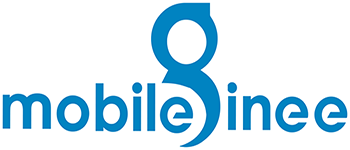Web Development
Web Development
Web development is a broad term for the work involved in developing a web site for the Internet (World Wide Web) or an intranet (a private network). Web development can range from developing the simplest static single page of plain text to the most complex web-based internet applications, electronic businesses, and social network services. A more comprehensive list of tasks to which web development commonly refers, may include web design, web content development, client liaison, client-side/server-side scripting, web server and network security configuration, and e-commerce development. Among web professionals, "web development" usually refers to the main non-design aspects of building web sites: writing markup and coding.
For larger organizations and businesses, web development teams can consist of hundreds of people (web developers). Smaller organizations may only require a single permanent or contracting webmaster, or secondary assignment to related job positions such as a graphic designer and/or information systems technician. Web development may be a collaborative effort between departments rather than the domain of a designated department.
Client side coding
- Ajax Asynchronous JavaScript provides new methods of using JavaScript, and other languages to improve the user experience.
- Flash Adobe Flash Player is a ubiquitous browser plugin ready for RIAs. Flex 2 is also deployed to the Flash Player (version 9+).
- JavaScript JavaScript is a ubiquitous client side platform for creating and delivering rich web applications that can also run across a wide variety of devices. It is a dialect of the scripting language ECMAScript.
- jQuery Cross-browser JavaScript library designed to simplify and speed up the client-side scripting of HTML.
- Microsoft Silverlight Microsoft's browser plugin that enables animation, vector graphics and high-definition video playback, programmed using XAML and .NET programming languages.
- HTML5 and CSS3 Latest HTML proposed standard combined with the latest proposed standard for CSS natively supports much of the client-side functionality provided by other frameworks such as Flash and Silverlight
Looking at these items from an "umbrella approach", client side coding such as XHTML is executed and stored on a local client (in a web browser) whereas server side code is not available to a client and is executed on a web server which generates the appropriate XHTML which is then sent to the client. The nature of client side coding allows you to alter the HTML on a local client and refresh the pages with updated content (locally), web designers must bear in mind the importance and relevance to security with their server side scripts. If a server side script accepts content from a locally modified client side script, the web development of that page is poorly sanitized with relation to security.
Server side coding
- ASP (Microsoft proprietary)
- ActiveVFP (open source)
- CSP, Server-Side ANSI C.
- ColdFusion (Adobe proprietary, formerly Macromedia, formerly Allaire)
- CGI
- Erlang, with Linux, Yaws, Mnesia, Erlang (LYME) solution stack
- Groovy (programming language) Grails (framework)
- Java, e.g. Java EE or WebObjects
- Lotus Domino
- Node.js
- Perl, e.g. Catalyst, Dancer or Mojolicious (all open source)
- PHP (open source)
- Python, e.g. Django (web framework) (open source)
- Real Studio Web Edition
- Ruby, e.g. Ruby on Rails (open source)
- Smalltalk e.g. Seaside, AIDA/Web
- SSJS Server-Side JavaScript, e.g. Aptana Jaxer, Mozilla Rhino
- WebDNA (WSC proprietary)
- Websphere (IBM proprietary)
- .NET and .NET MVC Frameworks (Microsoft proprietary)
